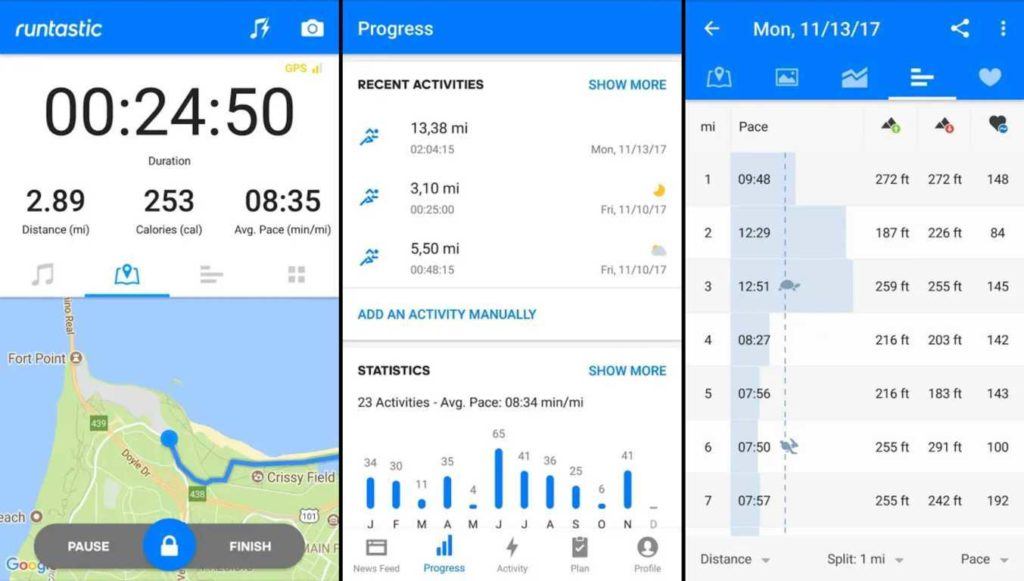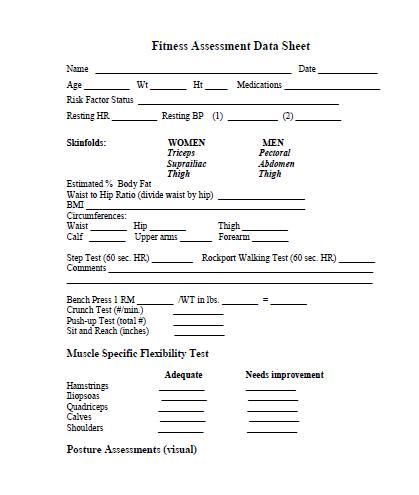
Even though we know that exercise has many benefits, often we lack motivation to exercise. It can be hard to fit in exercise when you have a full-time job. However, you can make a schedule with yourself and set aside a time each morning. It is a good idea to set an alarm for a few minutes before your workout to remind yourself to do it. If you aren’t motivated, it is possible to make excuses for not doing the workout. You might want to join your co-workers for happy hour, or you might have a glass of wine to ease your stress. Even if you don't want to work out after work, it might be worth meeting up with a friend for a post-work drink.
Set an alarm for later in your day if you're not a morning person. This will prevent you from sleeping through the night. If you're not a morning person or you have trouble getting out of bed, try a video that starts in the morning. Then, set a time during the day that you'll have the energy to exercise. Then, take a few minutes to watch it and try to figure out why you're lacking in motivation.

It's possible to work out to your favorite music. You can choose a song or an audiobook to make the workouts more enjoyable. If you have a difficult time listening to music while you workout, you can listen to podcasts or books on tape. A playlist can help you stay motivated while you do cardio. You can even use it to motivate yourself to exercise longer.
You can also increase your motivation to workout by setting goals. To achieve your goals, set a date and time. It can be overwhelming to set too many goals. One or two key goals will help you get the most from your exercise sessions. You can also set a goal for a particular size or time period. You can measure your progress easily if you have the time. Keep your eyes on the results.
There are many things you can do to stay motivated during a workout. A great way to motivate yourself is to reward yourself with a small victory at the end of every workout. A new muscle can be a motivating factor if it is possible to do so in just a few weeks. It is possible to not exercise after a bad week. But focusing on the achievements you make will help you feel better.

You can also start working out even if you don't feel like it. If you have a plan to get there, it's possible. It will be difficult to stay motivated if you aren't motivated. It is important to make it a regular habit. It should be part of your daily routine. You can get injured and burn out if you do not exercise regularly. So, try your best to keep up with your new workout routine.
FAQ
What is the working principle of an antibiotic?
Antibiotics are drugs which destroy harmful bacteria. Antibiotics are used for treating bacterial infections. There are many types of antibiotics. Some are given orally, while some are injected. Other antibiotics are applied topically.
People who have been exposed are often given antibiotics. One example is if someone has had chickenpox and wants to prevent shingles. Penicillin might also be administered to someone with strep throat. This will help prevent the possibility of developing pneumonia.
A doctor should give antibiotics to children. Side effects of antibiotics can be more dangerous for children than for adults.
Diarrhea being the most common side effect of antibiotics. Other side effects possible include dizziness, nausea, vomiting, stomach cramps, dizziness and allergic reactions. These side effects are usually gone once the treatment is complete.
How do I count calories?
You might be asking "What is the best diet?" or "is counting calories necessary?" The answer to this question depends on many factors, including your current health, your personal goals and preferences, as well as your overall lifestyle.
The Best Diet For Me - Which One Is Right For You?
My current health, my personal goals and lifestyle will determine the best diet for me. There are many diets out there, some good and some bad. Some diets work better than others. What can I do to make the right choice? What can I do to make the right decision?
These questions are addressed in this article. The article starts by introducing the many types of diets currently available. Then, the pros and cons of each type of diet are discussed. We'll then discuss how to choose which one is best for you.
Let's start by taking a look at the various types of diets.
Diet Types
There are three main types: low-fat, high-protein, or ketogenic. Let's look at each one briefly.
Low Fat Diets
A low fat diet is a diet that restricts the amount of fats consumed. This is achieved by reducing saturated fats like butter, cream cheese, and other dairy products. and replacing them with unsaturated fats (olive oil, avocados, etc.). If you want to lose weight fast and easily, then a low fat diet is often recommended. This kind of diet could cause problems like constipation or heartburn and indigestion. If a person doesn’t receive enough vitamins from their foods, this can lead to vitamin deficiency.
High Protein Diets
High protein diets are known to restrict carbohydrate intake and promote the consumption of proteins. These diets have higher protein levels than other diets. They are meant to help build muscle mass and burn more calories. Unfortunately, they can't provide adequate nutrition for those who eat regularly. They may also be too restrictive and not suitable for everyone.
Ketogenic Diets
Ketogenic diets can also be known as keto diets. They are high in fat and moderate in protein and carbs. Athletes and bodybuilders use them because they allow them more time and harder training without feeling fatigued. You must adhere to all side effects, including fatigue, headaches, nausea and headaches.
Here are 7 ways to live a healthy lifestyle.
-
Make sure you eat right
-
Exercise regularly
-
Sleep well
-
Drink lots of water
-
Get enough rest
-
Be happy
-
Smile often.
How can you live your best life every day?
It is important to identify what makes you happy. Once you are clear about what makes you happy and satisfied, you can move on to the next step. Asking other people how they live their best lives every day is also a good idea.
You can also read books by Wayne Dyer, such as "How to Live Your Best Life". He talks about how to find happiness and fulfillment at all stages of our lives.
How can you live a healthy life?
Healthy living means eating right, exercising regularly and getting enough sleep. It also involves managing stress and having fun. Avoiding sugar and processed foods is key to eating well. Exercise helps burn calories and strengthens muscles. Sleeping enough can improve memory and concentration. Stress management is a way to reduce anxiety levels and depression. Fun is key to staying young and vibrant.
What is the difference between a virus and a bacterium?
A virus, a microscopic organism, is incapable of reproducing outside its host cell. A bacterium is an organism that splits itself in two. Viruses can be as small as 20 nanometers, while bacteria can grow up to 1 micron.
Viruses spread easily through contact with infected bodily tissues, such as saliva and urine, semen, vaginal secretions or pus. Bacteria are usually spread through direct contact with contaminated objects or surfaces.
Viral infections can also be introduced to our bodies by a variety of cuts, scrapes or bites. They can also penetrate the skin through the eyes, nose or mouth.
Bacteria can be introduced to our bodies by cuts, scrapes or burns. They can also enter our bodies from food, water, soil, dust, and animals.
Viruses and bacteria both cause illness. But viruses can't multiply within their hosts. They infect only living cells, causing illness.
Bacteria can grow in their hosts and cause disease. They can even invade other parts of the body. To kill them, we must use antibiotics.
Statistics
- Extra virgin olive oil may benefit heart health, as people who consume it have a lower risk for dying from heart attacks and strokes according to some evidence (57Trusted Source (healthline.com)
- WHO recommends consuming less than 5% of total energy intake for additional health benefits. (who.int)
- nutrients.[17]X Research sourceWhole grains to try include: 100% whole wheat pasta and bread, brown rice, whole grain oats, farro, millet, quinoa, and barley. (wikihow.com)
- According to the 2020 Dietary Guidelines for Americans, a balanced diet high in fruits and vegetables, lean protein, low-fat dairy and whole grains is needed for optimal energy. (mayoclinichealthsystem.org)
External Links
How To
What does "vitamin" actually mean?
Vitamins are organic compounds naturally found in food. Vitamins are necessary for us to absorb nutrients in the foods we consume. Vitamins cannot be produced by the body. They must be acquired from food.
There are two types vitamins: water soluble or fat soluble. Water-soluble vitamins dissolve in water easily. You can find vitamin C,B1 or thiamine, B2 or riboflavin and B3 or niacin, B3/niacin, B6/pyridoxine, folic Acid, biotin and pantothenic Acid as examples. Fat soluble vitamins are stored in the liver and fatty tissue. Some examples include vitamin D and E, K, A and beta carotene.
Vitamins are classified based on their biological activity. There are eight major groups of vitamins:
-
A - Essential for healthy growth and health maintenance.
-
C - vital for proper nerve function, and energy production.
-
D – Essential for healthy teeth, bones and joints
-
E - Required for good vision & reproduction
-
K - Essential for healthy muscles and nerves.
-
P - vital for building strong bones andteeth.
-
Q - Aids in digestion and absorption.
-
R – Required for the formation of red blood vessels.
The recommended daily allowance (RDA) of vitamins varies depending on age, gender, and physical condition. The U.S. Food and Drug Administration (FDA) sets the RDA values.
For adults over 19 years, the RDA is 400 mg per day for vitamin A. Pregnant mothers need 600 micrograms per days because it is vital for the development and growth of their baby. Children ages 1-8 require 900 micrograms per day. Infants below one year old require 700mg per day. But, between 9 months to 12 months, the amount drops to 500mg per day.
Children ages 1-18years who are obese need 800 micrograms per day while those who are overweight need 1000 micrograms per day and children who are underweight need 1200 micrograms per day to meet their nutritional needs.
Children between 4 and 8 years old with anemia will need 2200 micrograms daily of vitamin C.
2000 micrograms daily is required for adults over 50 to maintain their general health. Mothers who are pregnant, nursing, or have a high nutrient need will require 3000 micrograms a day.
Adults over 70 require 1500 micrograms each day, since they lose around 10% of their muscle mass every decade.
Women who are pregnant, nursing or breastfeeding need more than the RDA. Pregnant women require 4000 micrograms daily during pregnancy, and 2500 micrograms every day after birth. Breastfeeding moms need 5000 micrograms each day when breastmilk production occurs.